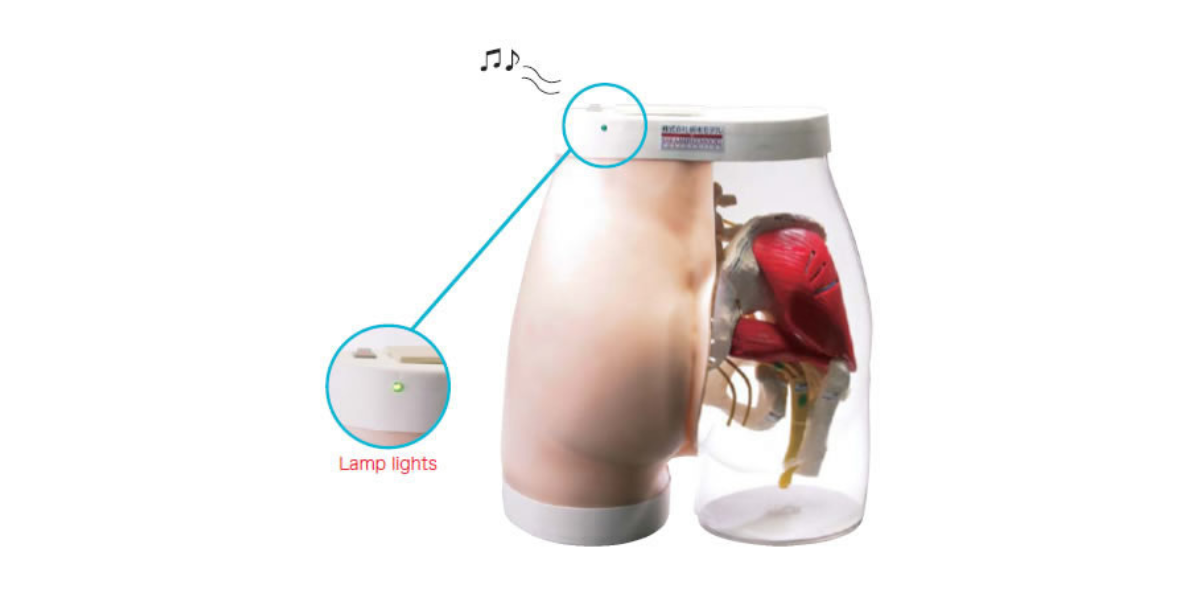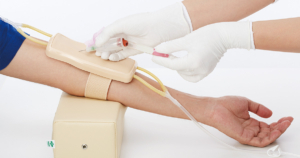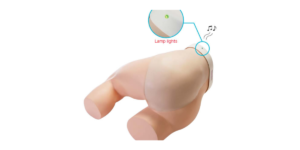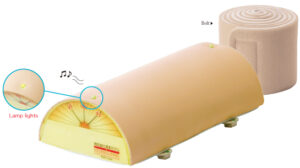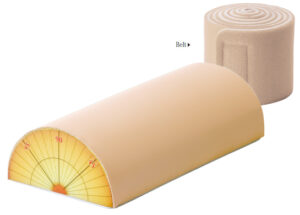● Weight/ Approx. 7kg
● Case size/ W41×D47×H36cm
● Accessories/ Stands for placing the model in a lateral position, Storage case.
● Supervised by Shuichi Aichi, Lecturer, Chuwa Medical College, Researcher, Department of Anatomy, Aichi Medical University.
Product feature video
Product Summary
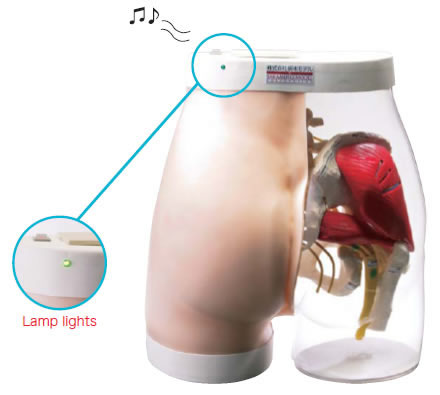
“Since iliac crest (iliac spine), great trochanter,
and ischial tuberosity are incorporated in the left side training model facilitating simulation of virtual palpation to identify the acupuncture point by confirming the structure of skeleton.”
The epidermis is made of a special material that does not leave acupuncture marks.
When the needle is pierced at the correct point, the green lamp lights up and a chime sounds.
Even beginners can practice easily.
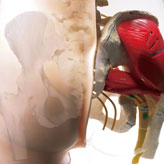
Features
1. Be able to understand the structure of the skeleton and muscles anatomically.
Supports learners’ understanding by explaining the inside of the body using transparent parts. You can get a three-dimensional understanding of your skeletal structure, muscles, and sciatic nerve.
2. Practical tactile simulation by reproducing the human skeleton.
The skin part incorporates the iliac crest (iliac spine), greater trochanter,
and ischial tuberosity, making it possible to perform tactile simulations to confirm the insertion position while checking the skeletal structure.
Practice
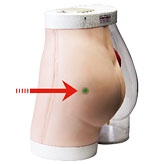
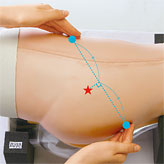
1[Method 1] Posterior superior iliac spine-greater trochanteric line
Insertion hole: Determine the midpoint between the posterior superior iliac spine and the greater trochanter, and find the insertion point 3 cm below this midpoint at a right angle.
You can simulate while checking the posterior superior iliac spine and greater trochanter.
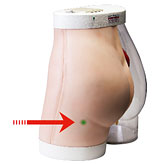
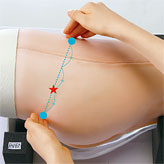
2[Method 2] Ichial tuberosity-greater trochanter line
Insertion hole: Connect the greater trochanter and ischial tuberosity,
and make a hole at a point 1/3 from the ischial tuberosity side. Supports tactile simulation using the ischial tuberosity and greater trochanter.
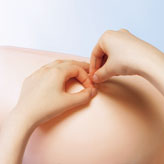
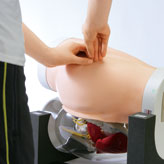
3 Acupuncture insertion
It is possible to learn insertion techniques based on anatomical understanding.
Additionally, if you fail to insert the needle using the practice model, you can reconfirm what went wrong using the transparent model, making it easy to discover the cause.
This model can be used for both lectures and practical training.


